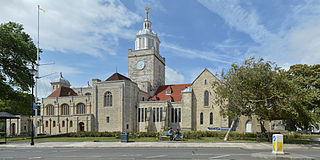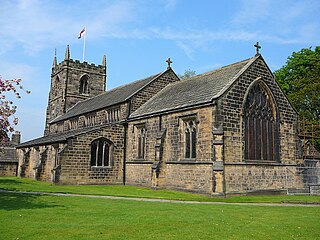
St. Stephen's Cathedral is the mother church of the Roman Catholic Archdiocese of Vienna and the seat of the Archbishop of Vienna, Christoph Cardinal Schönborn, OP. The current Romanesque and Gothic form of the cathedral, seen today in the Stephansplatz, was largely initiated by Duke Rudolf IV (1339–1365) and stands on the ruins of two earlier churches, the first a parish church consecrated in 1147. The most important religious building in Vienna, St. Stephen's Cathedral has borne witness to many important events in Habsburg and Austrian history and has, with its multi-coloured tile roof, become one of the city's most recognizable symbols. It has 256 stairs from the top to the bottom

A pulpit is a raised stand for preachers in a Christian church. The origin of the word is the Latin pulpitum. The traditional pulpit is raised well above the surrounding floor for audibility and visibility, accessed by steps, with sides coming to about waist height. From the late medieval period onwards, pulpits have often had a canopy known as the sounding board, tester or abat-voix above and sometimes also behind the speaker, normally in wood. Though sometimes highly decorated, this is not purely decorative, but can have a useful acoustic effect in projecting the preacher's voice to the congregation below, especially prior to the invention of modern audio equipment. Most pulpits have one or more book-stands for the preacher to rest his bible, notes or texts upon.

Ulm Minster is a Lutheran church located in Ulm, State of Baden-Württemberg (Germany). It is currently the tallest church in the world. The church is the fifth-tallest structure built before the 20th century, with a steeple measuring 161.53 metres.

The Cathedral Church of St. James is an Anglican cathedral in Downtown Toronto, Ontario, Canada. It is the location of the oldest congregation in the city, with the parish being established in 1797. The church, with construction beginning in 1850 and opening for services on June 19, 1853, was one of the largest buildings in the city at that time. It was designed by Frederick William Cumberland and is a prime example of Gothic Revival architecture.

The Cathedral Church of St Thomas of Canterbury, commonly known as Portsmouth Cathedral, is an Anglican cathedral church in the centre of Old Portsmouth in Portsmouth, England. It is the cathedral of the Diocese of Portsmouth and the seat of the bishop of Portsmouth.

The Church of Bangladesh is a united Protestant church formed by the union of various Protestant churches in Bangladesh, principally the Anglican and Presbyterian denominations. The Church of Bangladesh is full communion with the Anglican Communion. Also it's a member of World Communion of Reformed Churches.

St John's Cathedral is the cathedral of the Anglican Diocese of Brisbane and the metropolitan cathedral of the ecclesiastical province of Queensland, Australia. It is dedicated to St John the Evangelist. The cathedral is situated in Ann Street in the Brisbane central business district, and is the successor to an earlier pro-cathedral, which occupied part of the contemporary Queens Gardens on William Street, from 1854 to 1904. The cathedral is the second-oldest Anglican church in Brisbane, predated only by the extant All Saints church on Wickham Terrace (1862). The cathedral is listed on the Queensland Heritage Register.

St. George's Cathedral is an Anglican cathedral in Georgetown, Guyana. The church is of Gothic revival timber construction and reaches a height of 43.5 metres (143 ft). It is the seat of the Bishop of Guyana.

The Cathedral of St. John the Evangelist, located at 816 Spadina Crescent East in the Central Business District neighbourhood of Saskatoon, Saskatchewan, Canada is the cathedral of the Anglican Diocese of Saskatoon.

The St Saviour's Cathedral is the heritage-listed cathedral church of the Anglican Diocese of Canberra and Goulburn in Goulburn, Goulburn Mulwaree Council, New South Wales, Australia. The cathedral is dedicated to Jesus, in his title of Saviour. The current dean is the Very Reverend Phillip Saunders. It was added to the New South Wales State Heritage Register on 20 April 2009.

Évry Cathedral is a Roman Catholic church located in the new town of Évry (Essonne), France. The cathedral was designed by Swiss architect Mario Botta. It opened in 1995 and was consecrated and dedicated to Saint Corbinian in 1996. It is the only cathedral begun and completed in France in the 20th century.

Christ Church is a redundant Anglican church in Great King Street, Macclesfield, Cheshire, England. It is recorded in the National Heritage List for England as a designated Grade II* listed building, and is under the care of the Churches Conservation Trust. It is open to visitors at advertised times. The church was in use until 1981. It remains consecrated and is used occasionally for services.

All Saints Anglican Church is a heritage-listed church at 32 Wickham Terrace, Spring Hill, City of Brisbane, Queensland, Australia. First founded in 1862, the current building designed by Benjamin Backhouse was completed in 1869, making it the oldest Anglican church in Brisbane. For most of its history, it has been identified with the High Church or Anglo-Catholic tradition within Anglicanism. It was added to the Queensland Heritage Register on 21 October 1992.

Kildare Cathedral, or St Brigid's Cathedral in Kildare, is one of two Church of Ireland cathedrals in the United Dioceses of Meath and Kildare. It is in the ecclesiastical province of Dublin. Originally a Catholic cathedral, it was built in the 13th century on the site of an important Celtic Christian abbey, which is said to have been founded by Saint Brigid in the 5th century. The site was taken over by the Protestant Church of Ireland following the Reformation. There is an Irish round tower in the cathedral grounds.

St Martin's Cathedral is a cathedral in Slovakia. It is located in the town of Spišská Kapitula and is the cathedral church of the Spiš diocese.

St Paul's Anglican Cathedral is an Australian heritage-listed cathedral at 89 William Street, Rockhampton, Rockhampton Region, Queensland. It was designed principally by Annersley Voysey and built from 1883 to 1953. It is also known as St Paul's Church of England and St Paul's Church of England Cathedral. It was added to the Queensland Heritage Register on 21 October 1992. The associated hall and offices were listed on the Queensland Heritage Register on 23 June 2000.

The Parish Church of All Saints in Ilkley in West Yorkshire, England is an active Anglican parish church in the archdeaconry of Bradford and the Diocese of Leeds.

St. John's Cathedral is the cathedral of the Thoothukudi - Nazareth Diocese of the Church of South India.

St Peter and Paul's Old Cathedral is a heritage-listed former Catholic cathedral and now parish church at 42 Verner Street, Goulburn, Goulburn Mulwaree Council, New South Wales, Australia. It was designed by Andrea Stombuco and Charles Spadacini and built from 1871 to 1890 by C. J. O'Brien and Wilkie Bros. It is also known as St. Peter and Paul's Former Cathedral and St Peter and Paul's Catholic Cathedral; Saints Peter and Paul's Catholic Cathedral. It was added to the New South Wales State Heritage Register on 20 April 2009.

The Matani monastery is part of a complex of buildings in the mountains 3–5 km west of the town of Matani in the Akhmeta district of the Kakheti region, Georgia. The monastery of Matani belongs to the Diocese of Alaverdi, although it does not remain active.





















